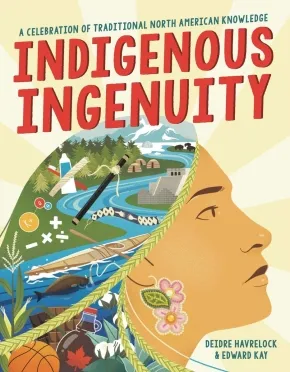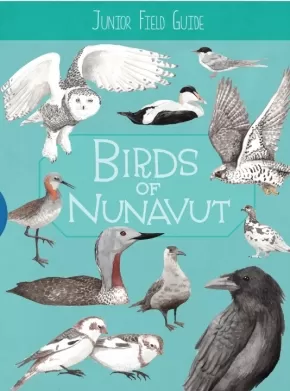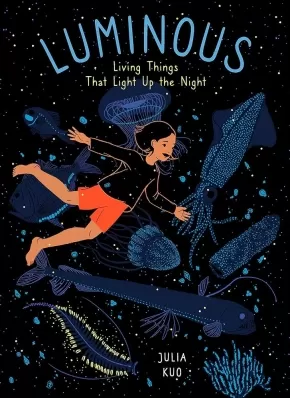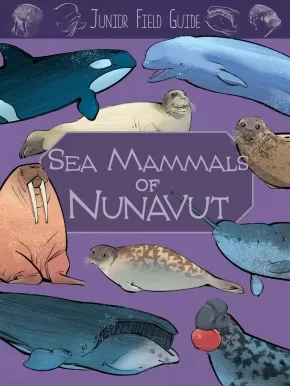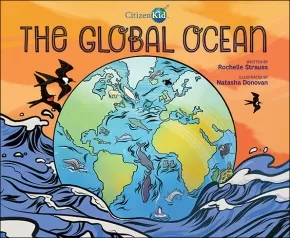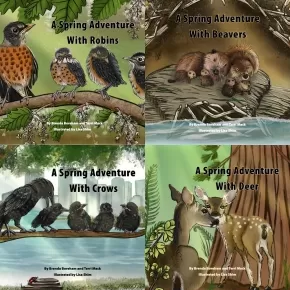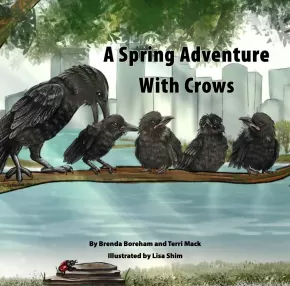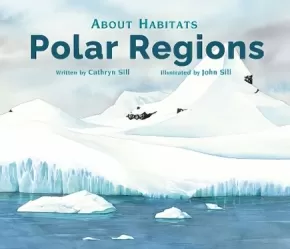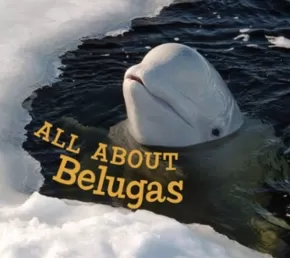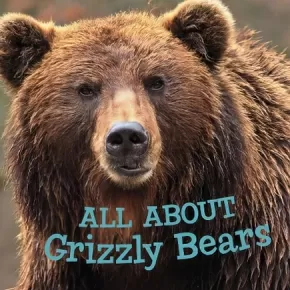
Reference
1
-
15
of
55 Results;
Sort By
Go To
of 4
The Cherokee Syllabary: An Illustrated Key to the Cherokee Language
$21.95
Artists:
Format:
Hardcover
Text Content Territories:
Indigenous American; Native American; Cherokee;
ISBN / Barcode: 9781570674228
Synopsis:
Synopsis:
The Cherokee Syllabary: An Illustrated Key to the Cherokee Language reintroduces adults as well as children to their language once again. The introduction and pronunciation key aid in understanding the beautifully illustrated syllabary characters. Accompanying each illustration is a Cherokee word that contains the Cherokee syllabary character, the Cherokee sounds of each syllabary character in the word, the word in English and a row of syllabary characters with sound of each below. Young children will be enchanted by the delightful illustrations. The concept for the illustrations was influenced by medieval illuminated manuscripts. The book is a valuable educational resource for schools and libraries that adds multicultural diversity to their classrooms and collections.
Educator Information
Recommended for ages 6 to 8, but anyone learning the Cherokee language could find this useful.
Includes an Understanding the Text page, nothing that the Cherokee alphabet isn't an alphabet but a syllabary (each Cherokee character represents a complete syllable) and explaining more about the information in the book.
Additional Information
40 pages | 8.50" x 8.50" | Hardcover
Indigenous Ingenuity: A Celebration of Traditional North American Knowledge (PB)
$12.99
Artists:
Format:
Paperback
ISBN / Barcode: 9780316413435
Synopsis:
Synopsis:
Celebrate Indigenous thinkers and inventions with this beautifully designed, award-winning interactive nonfiction book—perfect for fans of Braiding Sweetgrass.
Corn. Chocolate. Fishing hooks. Boats that float. Insulated double-walled construction. Recorded history and folklore. Life-saving disinfectant. Forest fire management. Our lives would be unrecognizable without these, and countless other, scientific discoveries and technological inventions from Indigenous North Americans.
Spanning topics from transportation to civil engineering, hunting technologies, astronomy, brain surgery, architecture, and agriculture, Indigenous Ingenuity is a wide-ranging STEM offering that answers the call for Indigenous nonfiction by reappropriating hidden history. The book includes fun, simple activities and experiments that kids can do to better understand and enjoy the principles used by Indigenous inventors. Readers of all ages are invited to celebrate traditional North American Indigenous innovation, and to embrace the mindset of reciprocity, environmental responsibility, and the interconnectedness of all life.
Reviews
"An astonishing, exuberant treasure trove of history, science and hands-on activities that repeatedly begs the question: "Why didn't I know this?" Essential for kids and adults. We need this book." —Candace Fleming, award-winning author of The Rise and Fall of Charles Lindbergh and The Family Romanov
"This book will amaze readers and teachers as it demonstrates how pervasive and critical the history of Indigenous people is. A completely unique and important narrative not to be missed; readers and teachers will come away with a new appreciation for the myriad contributions Indigenous people have made."—SLJ, starred review
"A conversational tone invites readers to engage with this monumental collection . . . Curious readers will learn facts unique to individual tribal groups while gaining knowledge of STEM/STEAM concepts. An ambitious, appealing, and accessible work documenting and protecting valuable knowledge."—Kirkus Reviews
"Engaging and informative, this will be welcomed by both STEM and social studies curricula to help to correct prevailing narratives about Indigenous technology."—Booklist, starred review
"Via authoritative, meticulously researched prose, the creators detail Native peoples’ significant strides in scientific pursuits . . . [and] showcase Native tribes’ continual and enduring impact. Photographs, as well as interactive activities detailing recipes and science experiments, feature throughout, lending a hands-on approach to this clear and concise work."—Publishers Weekly
"This book is a valuable contribution to efforts to decolonize learning and introduce readers to the breadth of indigenous knowledge as practiced in widely disparate geographic zones."—Canadian Review of Materials
"An engaging and cleverly compiled guide to North American and Mesoamerican Indigenous innovation. STEM topics (housing, medicine, clothing, agriculture, and hunting among them) are compellingly and conversationally discussed."—Shelf Awareness
Educator Information
Recommended for ages 8 to 12.
Fountas & Pinnell Text Level Gradient: Z
Additional Information
288 pages | 6.95" x 9.00" | Paperback
Strong Science - Animals Teacher's Guide
 $30.00
$30.00

Artists:
Format:
Coil Bound
Text Content Territories:
Indigenous Canadian; First Nations; Sioux; Lakota; Hunkpapa;
Grade Levels: 1;
ISBN / Barcode: 9781771746274
Synopsis:
Synopsis:
This teacher’s guide supports a language-based Science unit for early primary classrooms, using the sixteen titles in Strong Nations Publishing’s Strong Science - Animals series.
The unit introduces early primary students to four easily recognizable animals that live in or near many communities in Canada: beaver, black-tailed deer, mallard duck, and raccoon. While learning about the animals, students will gain knowledge and skills mandated by Ministry of Education Science curricula in Canadian provinces and territories.
In addition, this teacher’s guide addresses other curriculum areas— Language Arts, Math, Social Studies, and Art—and provides information to help develop an appreciation for and understanding of Indigenous cultures.
This teacher-friendly, comprehensive teacher’s guide provides:
• lesson plans to introduce the books in the Strong Science - Animals series;
• lesson plans to address knowledge and skills common to Canadian Science curricula;
• activities to integrate the unit across the curriculum;
• activities to wrap up the unit;
• reproducible activity pages.
Educator Information
The Strong Science - Animals series and teacher's guide is recommended for use with grade one students, but it may also be useful in kindergarten classes.
Additional Information
170 Pages | 8.5" x 11" | Coil Bound
Birds of Nunavut
$14.95
Artists:
Format:
Paperback
Text Content Territories:
Indigenous Canadian; Inuit;
ISBN / Barcode: 9781774505625
Synopsis:
Synopsis:
There are a lot of different types of birds living in Nunavut. From snowy owls to rock ptarmigans, learn all about what each bird looks like, how they live, what they eat, their migration patterns, and more. This science book combines colourful illustrations and photographs in a handy field guide filled with interesting facts about birds.
Educator & Series Information
Recommended for ages 8 to 10.
This book is part of the Junior Field Guide series. Perfect for learning all about living things in the Arctic! These Junior Field Guides give information and interesting facts about the different animals that live in Nunavut.
Additional Information
32 pages | 7.50" x 10.00" | Paperback
Luminous: Living Things That Light Up the Night
$22.95
Artists:
Format:
Hardcover
ISBN / Barcode: 9781771648882
Synopsis:
Synopsis:
In this “surprisingly simple yet mesmerizing introduction to a wonder of the natural world” (Kirkus STARRED Review), kids aged 4 to 8 will marvel at the science of bioluminescence through stunning images of glowing creatures and other organisms.
When it’s dark out, we need light to see. But what if your body could make its own light?
From acclaimed author-illustrator Julia Kuo comes a remarkable picture book about bioluminescence, the light made from living things, and its many forms: fireflies and foxfire, fungi and glow-worms, deep-sea fish and vampire squids.
Kuo’s radiant art portrays a young child and adult discovering different bioluminescent creatures, accompanied by simple lyrical text and informative sidebars that reveal fascinating scientific facts about each of them.
An introduction to an extraordinary natural phenomenon, Luminous shines a light upon how truly wondrous the world is.
Luminous features:
- Brilliant and unique illustrations: The depiction of vibrant bioluminescent species against an unusual black backdrop creates an unforgettable visual experience for readers.
- The science of bioluminescence: Shares the real-life magic of bioluminescence with sidebars about the various places and species in which bioluminescence is found.
- Text can be read on two levels: Kuo’s simple and poetic narrative is accompanied by scientific facts about bioluminescence.
Reviews
“Will intrigue children and make them feel they have learned something new without feeling as though they are being taught….the illustrations…immediately evoke the glow of bioluminescence. Lovely.” — School Library Journal
“With two-level text and illustrations that almost seem to glow, Kuo presents the phenomenon of bioluminescence … simple, poetic text and striking images make for an effective group read-aloud. A surprisingly simple yet mesmerizing introduction to a wonder of the natural world.”—Kirkus STARRED Review
Educator Information
Recommended for ages 4 to 8.
Additional Information
44 pages | 8.00" x 11.00" | Hardcover
Sea Mammals of Nunavut
$14.95
Artists:
Format:
Paperback
Text Content Territories:
Indigenous Canadian; Inuit;
ISBN / Barcode: 9781774505854
Synopsis:
Synopsis:
Learn about what kinds of sea mammals live in the Arctic! From narwhals and belugas to walruses and ringed seals, this nonfiction book introduces young readers to wildlife in arctic waters.
An exciting addition to the collection of Junior Field Guides from Inhabit Education Books!
Educator & Series Information
Recommended for ages 8 to 10.
This book is part of the Junior Field Guide series. Perfect for learning all about living things in the Arctic! These Junior Field Guides give information and interesting facts about the different animals that live in Nunavut.
Additional Information
32 pages | 7.50" x 10.00" | Paperback
The Global Ocean
$21.99
Artists:
Format:
Hardcover
ISBN / Barcode: 9781525304910
Synopsis:
Lexile Level 1140.
Synopsis:
The global ocean is in trouble. This beautiful and important book explores the issues --- and what we can do to help.
Though we think of Earth's five oceans as separate and distinct, they are actually a linked system of circulating water that is one single ocean --- the global ocean. This comprehensive and accessible overview explores the global ocean's enormous influence on the planet, as well as humans' often-detrimental influence on the ocean. But it also highlights some of the many ways people are working to restore and heal the global ocean --- from everyday actions to large institutional projects --- making the message of urgency as hopeful as it is accurate. Filled with fascinating information, stunning visuals and plenty of calls to action, readers will be inspired to discover what they can do to help heal Earth's most important feature and, ultimately, our planet.
Bestselling author Rochelle Strauss applies a positive, proactive approach to the urgent topics of climate change and ocean conservation in this gorgeous and unique depiction of the global ocean, based on the most current ocean science research. Engaging illustrations on every spread by award-winning Natasha Donovan are eye-catching and powerful. Examples of real people of all ages making a difference can be found in sidebars on each spread with more at the back of the book. Two sections list ways to help, one for children and one for the adults in their lives. There are many curriculum links in earth and life sciences, particularly in climate, environment, habitats, ecosystems and diversity of living things. Part of the CitizenKid series, this book encourages citizenship and engaging in the global community.
Educator & Series Information
Recommended for ages 8 to 12.
Part of the CitizenKid series.
Curriculum Links: Earth and Life Sciences; Diversity of Living Things; Ecosystem; Nature; Habitats; Climate; Earth Systems; Water; Envrionment
Lexile Level 1140.
Additional Information
36 pages | 9.30" x 11.45" | Hardcover
A Spring Adventure Series Bundle
 $43.02 $47.80
$43.02 $47.80

ISBN / Barcode: 9781771745734
Synopsis:
Synopsis:
Included in this bundle are all four titles in the A Spring Adventure series:
A Spring Adventure With Deer
A Spring Adventure With Crows
A Spring Adventure With Robins
A Spring Adventure With Beavers
Books in this series use both fiction and non-fiction as a unique approach to storytelling.
On left-hand pages, lyrical text and colourful illustrations tell stories of young animals and their early morning spring adventures. Expertly woven into these delightful stories are interesting facts about the young animals and other plants and animals in that ecosystem.
Captioned and labelled photographs, word boxes, a diagram, and a map make the non-fiction portion of these books an accessible source of information for young readers.
Science Connections: Biodiversity, animal classification, food chains, life cycles, ecosystems, geology, and the connections between living and non-living things are some of the concepts included in this book.
Recommended for grades 2 and 3.
Scroll below to learn more about each book included in this bundle.
Additional Information
ISBN: 9781771745734
A Spring Adventure With Beavers
 $11.95
$11.95

Artists:
Format:
Paperback
ISBN / Barcode: 9781771745673
Synopsis:
Synopsis:
“The kit uses her webbed back feet and little flat tail to push through the water. She swims down the tunnel and out into the pond. At the surface of the water, she sees a dragonfly. She follows it to the edge of the pond. It settles on a big rock.”
This book uses both fiction and non-fiction as a unique approach to storytelling.
On left-hand pages, lyrical text and colourful illustrations tell a story of a young beaver’s early morning spring adventure. Using her senses, the kit discovers the world around her lodge. Expertly woven into this delightful story are interesting facts about beavers and other plants and animals in this wetland ecosystem.
Captioned and labelled photographs, word boxes, a diagram, and a map make the non-fiction portion of this book an accessible source of information for young readers.
Educator & Series Information
This book is part of the A Spring Adventure series.
Recommended for grades 2 and 3.
Captioned and labelled photographs, word boxes, a diagram, and a map make the non-fiction portion of this book an accessible source of information for young readers.
Science Connections: Biodiversity, animal classification, food chains, life cycles, ecosystems, geology, and the connections between living and non-living things are some of the concepts included in this book.
Additional Information
24 Pages | 8" x 8" | ISBN: 978-1-77174-567-3 | Paperback
A Spring Adventure With Crows
 $11.95
$11.95

Artists:
Format:
Paperback
ISBN / Barcode: 9781771745680
Synopsis:
Synopsis:
“The fledgling lands safely at the foot of the tree. He looks around. He sees a ladybug crawling along the leaf of a stinging nettle. He is curious. Is it good to eat? He hops up onto a smooth, black rock to take a closer look.”
This book uses both fiction and non-fiction as a unique approach to storytelling.
On left-hand pages, lyrical text and colourful illustrations tell a story of a young crow’s early morning spring adventure. Using his senses, the fledgling discovers the world around his nest. Expertly woven into this delightful story are interesting facts about crows and other plants and animals in a city park.
Captioned and labelled photographs, word boxes, a diagram, and a map make the non-fiction portion of this book an accessible source of information for young readers.
Educator & Series Information
This book is part of the A Spring Adventure series.
Recommended for grades 2 and 3.
Captioned and labelled photographs, word boxes, a diagram, and a map make the non-fiction portion of this book an accessible source of information for young readers.
Science Connections: Biodiversity, animal classification, food chains, life cycles, ecosystems, geology, and the connections between living and non-living things are some of the concepts included in this book.
Additional Information
24 Pages | 8" x 8" | ISBN: 978-1-77174-568-0 | Paperback
A Spring Adventure With Deer
 $11.95
$11.95

Artists:
Format:
Paperback
ISBN / Barcode: 9781771745659
Synopsis:
Synopsis:
“The buzzing sound fades away when the bee flies off. The fawn twitches his large ears and looks about. He can hear trickling water close by. He walks to the far side of the meadow, down a rocky bank, and to a little creek below.”
This book uses both fiction and non-fiction as a unique approach to storytelling.
On left-hand pages, lyrical text and colourful illustrations tell a story of a young fawn’s early morning spring adventure. Using his senses, the fawn discovers the world around him while searching for his mother. Expertly woven into this delightful story are interesting facts about black-tailed deer and other plants and animals in a forest ecosystem.
Captioned and labelled photographs, word boxes, a diagram, and a map make the non-fiction portion of this book an accessible source of information for young readers.
Educator & Series Information
This book is part of the A Spring Adventure series.
Recommended for grades 2 and 3.
Captioned and labelled photographs, word boxes, a diagram, and a map make the non-fiction portion of this book an accessible source of information for young readers.
Science Connections: Biodiversity, animal classification, food chains, life cycles, ecosystems, geology, and the connections between living and non-living things are some of the concepts included in this book.
Additional Information
24 Pages | 8" x 8" | ISBN: 978-1-77174-565-9 | Paperback
A Spring Adventure With Robins
 $11.95
$11.95

Artists:
Format:
Paperback
ISBN / Barcode: 9781771745666
Synopsis:
Synopsis:
“The fledgling lands in the dry leaves, cones, and twigs on the forest floor. He stops for a moment. He looks around. He is wondering about the little flowers on the kinnikinnick plants. Are they food? He hops up onto a nearby rock to take a closer look.”
This book uses both fiction and non-fiction as a unique approach to storytelling.
On left-hand pages, lyrical text and colourful illustrations tell a story of a young robin’s early morning spring adventure. Using his senses, the fledgling discovers the world around his nest. Expertly woven into this delightful story are interesting facts about robins and other plants and animals in a forest ecosystem.
Captioned and labelled photographs, word boxes, a diagram, and a map make the non-fiction portion of this book an accessible source of information for young readers.
Educator & Series Information
This book is part of the A Spring Adventure series.
Recommended for grades 2 and 3.
Captioned and labelled photographs, word boxes, a diagram, and a map make the non-fiction portion of this book an accessible source of information for young readers.
Science Connections: Biodiversity, animal classification, food chains, life cycles, ecosystems, geology, and the connections between living and non-living things are some of the concepts included in this book.
Additional Information
24 Pages | 8" x 8" | ISBN: 978-1-77174-566-6 | Paperback
About Habitats: Polar Regions
$11.95
Artists:
Format:
Paperback
ISBN / Barcode: 9781682633342
Synopsis:
Synopsis:
This beginner's guide and classroom favorite explores the Arctic and Antarctic biomes, their beauty, and global diversity. From the creators of the award—winning About Habitats and About… series.
In this addition to the About Habitats series, former educator and author Cathryn Sill uses simple, easy-to-understand language to teach children what the Polar Regions are (from the frozen deserts of Antarctica to the ice floes of the Arctic Ocean) along with what kinds of animals and plants live there, how they have adapted to life in the environment, and why they're important.
Noted wildlife illustrator John Sill offers full—color illustrations depicting the various landscapes and species of animals and plants. A glossary and afterword provide further details. Great for early childhood and elementary units on geography and habitats, nature and environment.
The About Habitats series introduces children to specific habitats and their living and nonliving components. Each book in the series provides information about the nature and characteristics of the habitat while the full-page illustrations expand on that information.
Reviews
“A solid read-aloud to introduce young children to this area of the world.” ―School Library Journal
“Given the demand for informational picture books on Arctic and Antarctic regions and their wildlife, libraries will find this a particularly useful addition to the Sills’ handsome About Habitat series.” ―Booklist Online
“Easily accessible…” ― Horn Book Guide
Educator & Series Information
With simple text and language, and strong picture support (paintings), this non-fiction narrative teaches children what polar regions are and what kinds of animals and plants live there.
This book is a part of the About Habitats series, which introduces children to specific habitats and their living and nonliving components.
Recommended ages: 3-7
Additional Information
48 pages | 10.00" x 8.50" | Paperback
All About Belugas - Nunavummi Reading Series
$8.95
Format:
Paperback
ISBN / Barcode: 9781774504604
Synopsis:
Synopsis:
Belugas are one of the many amazing animals found in Nunavut! Learn all about what belugas look like, where they live, what they eat, how they communicate, and where they migrate. This non-fiction book gives information and facts about belugas alongside beautiful photographs and illustrations.
Educator & Series Information
Recommended for ages 6 to 8.
This book is part of the Nunavummi Reading Series, a Nunavut-developed series that supports literacy learning while teaching readers about the people, traditions, and environment of the Canadian Arctic. It is a Level 8-11 book in the series.
Nunavummi Reading Series books have also been officially levelled using the Fountas & Pinnell Text Level Gradient™ Levelling System. This book's F&P Level is L.
Additional Information
24 pages | 8.00" x 8.00" | Paperback | Colour photographs throughout
All About Grizzly Bears - Nunavummi Reading Series
$8.95
Format:
Paperback
ISBN / Barcode: 9781774502754
Synopsis:
Synopsis:
Learn all about where grizzly bears live, what they eat, and how they hunt.
This non-fiction book gives information about the grizzly bear, one of the most powerful and resilient animals of the North.
Educator & Series Information
Recommended for ages 6 to 8.
This book is part of the Nunavummi Reading Series, a Nunavut-developed series that supports literacy learning while teaching readers about the people, traditions, and environment of the Canadian Arctic. It is a Level 8-11 book in the series.
Nunavummi Reading Series books have also been officially levelled using the Fountas & Pinnell Text Level Gradient™ Levelling System. This book's F&P Level is M.
Additional Information
24 pages | 8.00" x 8.00" | Paperback | Colour photographs throughout
Sort By
Go To
of 4



